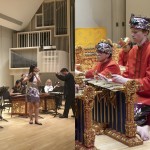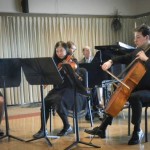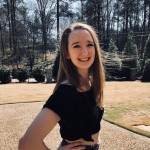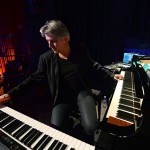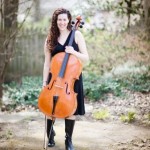On Friday, November 30th at 8:00 pm in the Lang Concert Hall, the semester’s first concert of the Elizabeth Pollard Fetter Chamber Music Program will be held. The Department of Music and Dance has been supporting the Fetter Chamber Program for four decades, allowing student musicians to receive professional coaching. Students must audition in order to participate in the program. Student musicians are then divided into various groups that meet weekly for ten one-hour coached rehearsals, as well as a weekly one-hour self-directed rehearsal. This consistent rehearsal process culminates in a performance at the end of the semester.
Dr. Michael Johns is the current director of the Fetter Chamber Music Program. His role is to help set up the semester, put the programs together, pair groups with appropriate coaches, and monitor how the groups are progressing. In general, the selection of groups, performing partners, and repertoire are student-generated. “When someone expresses an interest in participating but does not have a partner, I help to build a group,” Dr. Johns said.
Although the Fetter Chamber Music Program was put in place to fund coaching for student musicians, the weekly self-directed rehearsal is what ultimately shapes the performance that the audience will see. “This is an important aspect because chamber music is a conversation among equals and members of the group must develop their own internal dialogue,” Dr. Johns said.
Eleven student groups will perform, including duos for flute/piano, violin/piano, two pianos, piano four-hands, and cello/piano; a piano/violin/cello trio; some late Middle Ages, gospel, and opera vocal selections; a jazz combo and an improvisation group. “As you can see it is an eclectic mix with, literally, something for everyone,” Dr. Johns said. “The concerts will span 700 years of musical history, from improv being conceived in the moment to works from the 14th century.”
This year’s preparation for the concert has been quite different than in previous years because some students expressed interest in mounting an opera.
“Preparing for the preview in this semester’s concert has been particularly unusual because we haven’t actually staged the opera yet,” Rebecca Regan ‘19 said. “We’ve had to be creative and put together a semi-staged performance, which communicates the theatricality of the piece in a way that’s presentable and dramatically effective, even in the absence of full blocking.”
Regan will be one of the six featured sopranos in The Audition, which is a one-act comedic opera conceived by Martha Collins. Collins wrote the libretto and arranged music that was originally composed by Franz von Suppé.
“The Audition is unequivocally an ensemble piece, but nevertheless as an opera it goes back and forth between choruses and solos/duets,” Regan said. “Hence, it required an extra degree of flexibility and independence in making sure to do the work we needed to do on our solo parts while working on the choruses together.”
“One lovely thing about this music — the opening number, ‘Audition Jitters,’ in particular — is that the six parts weave together in a number of different ways and each character interacts musically with multiple others,” Regan continued.
The other two pieces that will be performed in the concert had a more traditional preparation process. Berlin Chen ‘19 will be playing the violin in the Piano Trio in a Minor, which was composed by Joseph Maurice Ravel in 1914.
Piano Trio in a Minor follows the standard plan of a piano trio, with the first and fourth movements in sonata form surrounding a scherzo/trio and slow movement. The piece is dramatic in mood due to the many ebbs and flows, and to its large dynamic range.
“Ravel Trio is a tricky piece to play!” Chen said. “For example, there are places where the piano and the strings have different time signatures, so we had to count carefully to make sure we were playing together.”
“Also, the piece has many delicious chords and has interesting use of harmonics in the strings, so I think the performance will be colorful and refreshing.” Chen continued.
Because each semester’s rehearsals and concerts are all unique, student musicians who participate in the Fetter Chamber Music Program always have a chance to challenge themselves and grow.
“It is incredible to hear the amount of growth and maturation from the beginning of the semester to the performance,” Dr. Johns said. “Everyone, without exception, plays up to or exceeds their individual abilities and the students are justifiably proud of their accomplishment.”
Following the first concert on Friday, November 30th will be two more concerts. The second concert will be held on Sunday, December 2nd at 7:30, and the third will be held on Friday, December 7th at 8:00pm.
David Chan ’19


